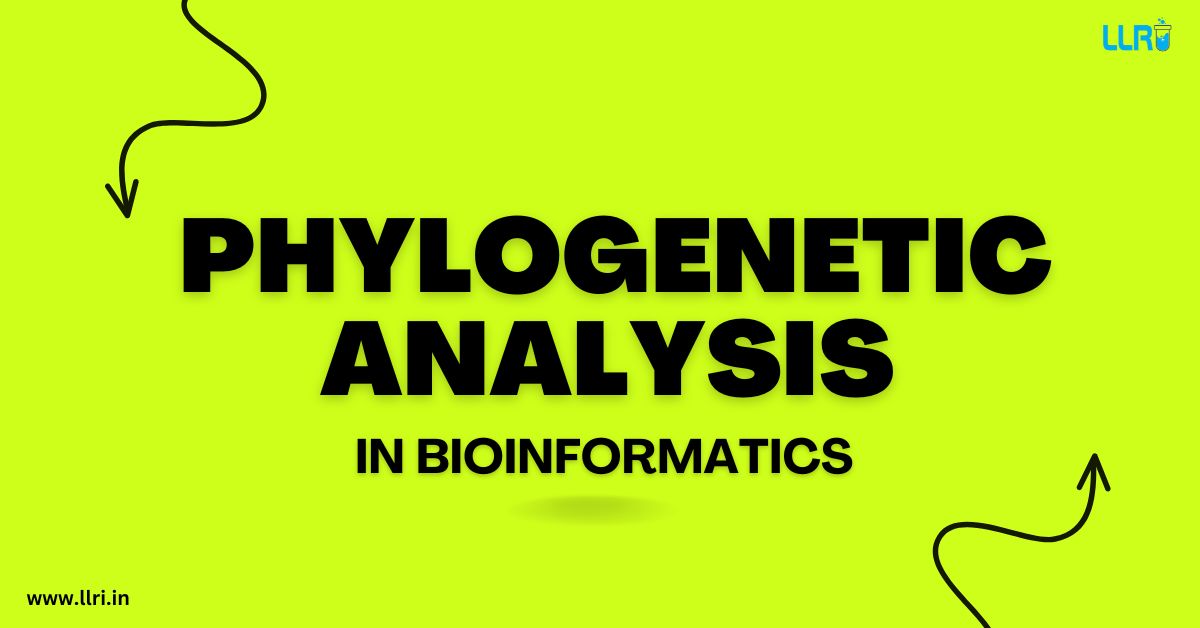What Is Phylogenetic Analysis: Phylogenetic analysis in bioinformatics is an important technique used to understand the evolutionary relationships between different organisms or biological molecules.
By analyzing the similarities and differences in their genetic or protein sequences, we can reconstruct their evolutionary history. This information is invaluable for a wide range of biological research, from understanding the origin of life to identifying the source of infectious diseases. Let’s learn it better here in this article by LLRI – your partner in career growth and success!
What Is Phylogenetic Analysis In Bioinformatics?
| Characteristics | Description |
| Goal | To infer the evolutionary relationships among a group of organisms or molecules. |
| Data | Genetic sequences (DNA, RNA) or protein sequences. |
| Methods | Distance-based, maximum parsimony, maximum likelihood, Bayesian inference. |
| Output | Phylogenetic tree (also known as a cladogram or dendrogram) that represents the evolutionary relationships. |
| Applications | Evolutionary biology, systematics, epidemiology, drug discovery, conservation biology. |
Methods of Phylogenetic Analysis
Several methods are employed in phylogenetic analysis, each with its own strengths and weaknesses. Some of the common methods include:
- Distance-based methods: These methods calculate the genetic distance between sequences and then use these distances to construct a phylogenetic tree.
- Maximum parsimony methods: These methods seek the simplest evolutionary explanation for the observed data, minimizing the number of evolutionary changes required to explain the observed differences between sequences.
- Maximum likelihood methods: These methods use statistical models to determine the most likely evolutionary history given the observed data.
- Bayesian methods: These methods use Bayesian inference to calculate the probability of different evolutionary trees given the observed data.
Bioinformatics Tools for Phylogenetic Analysis
Numerous bioinformatics tools are available for performing phylogenetic analysis. Some popular options include:
- MEGA (Molecular Evolutionary Genetics Analysis): A user-friendly software package that provides a wide range of tools for phylogenetic analysis and other evolutionary genetic analyses.
- PhyML: A powerful maximum likelihood method for inferring phylogenetic trees.
- MrBayes: A widely used Bayesian inference program for phylogenetic analysis.
- RAxML: A fast and efficient maximum likelihood program for inferring large phylogenetic trees.

Application of Phylogenetic Analysis
Phylogenetic analysis has a wide range of applications in various fields of biology, including:
- Evolutionary biology: Understanding the evolutionary relationships between different species and groups of organisms.
- Systematics and taxonomy: Classifying organisms based on their evolutionary relationships.
- Epidemiology: Tracking the spread of infectious diseases and identifying their sources.
- Drug discovery: Identifying potential drug targets and understanding the evolution of drug resistance.
- Conservation biology: Assessing the genetic diversity of endangered species.
How to Do Phylogenetic Analysis
Performing phylogenetic analysis typically involves the following steps:
- Data collection: Obtain the DNA or protein sequences of interest.
- Sequence alignment: Align the sequences to identify homologous positions.
- Phylogenetic tree construction: Use a suitable phylogenetic method to construct a tree that represents the evolutionary relationships between the sequences.
- Tree evaluation: Evaluate the reliability of the inferred tree using appropriate statistical methods.
- Interpretation and visualization: Interpret the results of the analysis and visualize the phylogenetic tree using appropriate software.
Learning Phylogenetic Analysis
If you’re interested in learning more about phylogenetic analysis, consider enrolling in online courses offered by clinical research institutions like LLRI. These courses provide training on various aspects of phylogenetic analysis, including theoretical concepts, practical skills, and the use of bioinformatics tools.

On A Final Note…
Phylogenetic analysis in bioinformatics is a powerful tool for understanding the evolutionary history of life. By analyzing the genetic and protein sequences of organisms, we can gain valuable insights into their relationships, origins, and adaptations.
With the continued development of new methods and tools, phylogenetic analysis will continue to play a important role in advancing our understanding of the biological world.
To learn more, reach out to us today!

